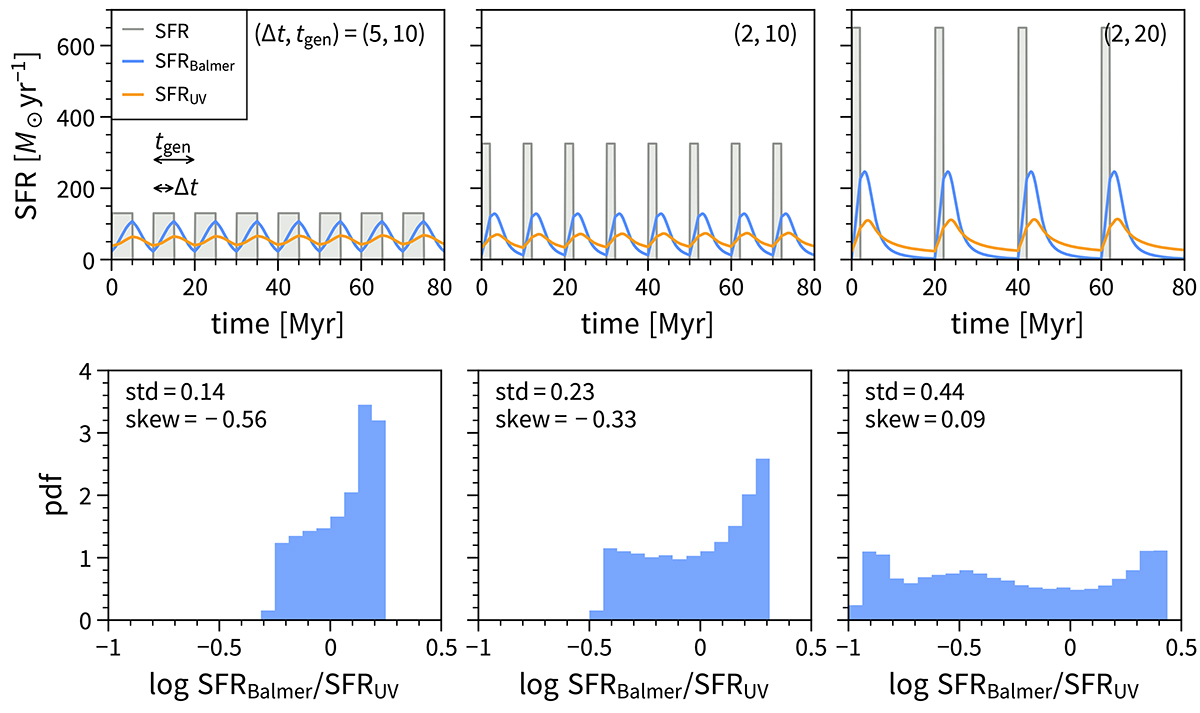Fig. 9.

Download original image
Star formation history in an FFB galaxy at z ∼ 10. The intrinsic SFH consists of several generations, separated by tgen ∼ 10 Myr. Each generation consists of a peak of nearly simultaneous FFB starbursts that last for Δt = 2 − 5 Myr, followed by a quiet period of gas accumulation until the onset of the following generation of bursts. Shown are three cases where Δt = 2, 5 and tgen = 10, 20 Myr. Top: Simplified representation of the periodic bursty SFH (gray histogram) and as deduced from two different SFR indicators, using a Balmer line (Hα, Hβ, etc.; blue) or FUV (∼ 1500 Å; orange), which probe the SFR at different time-scales. Bottom: Distribution of the ratio between the SFRs as indicated by Balmer lines and by FUV for galaxies with SFH in the corresponding top panels. Quoted are the standard deviation and the skewness of the distribution, which can be used to constrain the characteristic Δt and tgen by observations. For a high duty cycle, Δt/tgen, the distribution is dominated by a single skewed peak at a ratio larger than unity, while a long quiet period tgen − Δt broadens the distribution toward ratios smaller than unity. This characteristic bursty SFH may bias the observed luminosities to even higher values at the bright end.
Current usage metrics show cumulative count of Article Views (full-text article views including HTML views, PDF and ePub downloads, according to the available data) and Abstracts Views on Vision4Press platform.
Data correspond to usage on the plateform after 2015. The current usage metrics is available 48-96 hours after online publication and is updated daily on week days.
Initial download of the metrics may take a while.


